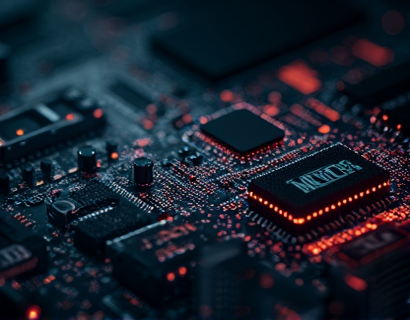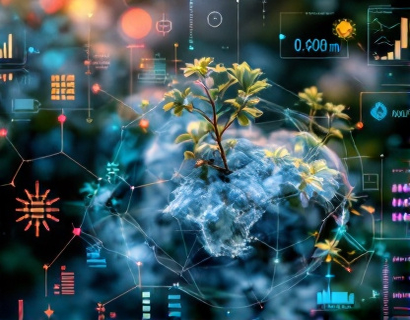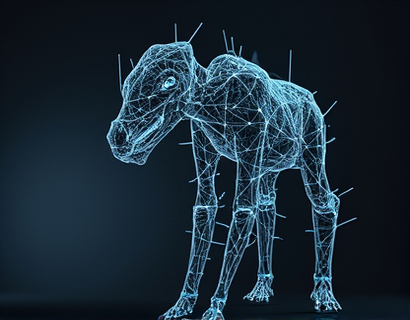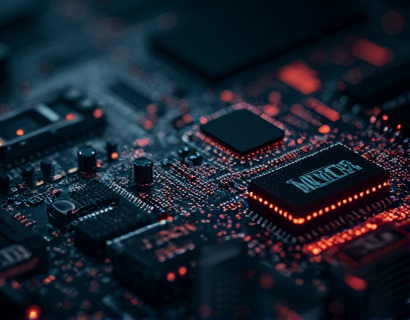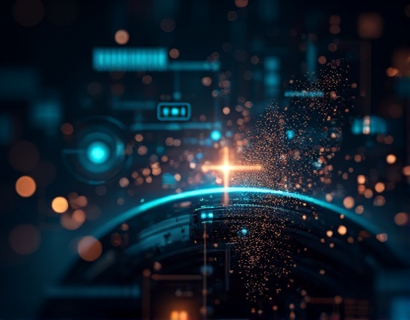Unlocking Next-Gen Productivity: The Synergy of Crypto and AI
The intersection of cryptocurrency and artificial intelligence (AI) is giving rise to a new era of productivity tools tailored for tech-savvy innovators and early adopters. This article delves into how the integration of these two cutting-edge technologies is revolutionizing the way we approach daily tasks and streamline workflows. By exploring the innovative ecosystem of apps and services powered by crypto and AI, we aim to provide a comprehensive understanding of the tools that are shaping the future of digital productivity.
Understanding the Basics: Crypto and AI
To fully appreciate the potential of crypto and AI in enhancing productivity, it's essential to grasp the fundamentals of both technologies. Cryptocurrency, often referred to as digital or virtual currency, uses cryptography for security and operates on a decentralized network, typically a blockchain. This decentralized nature ensures transparency, security, and reduces the need for intermediaries.
Artificial intelligence, on the other hand, involves the simulation of human intelligence processes by machines, particularly computer systems. These processes include learning (the acquisition of information and rules for using it), reasoning (using rules to reach approximate or definite conclusions), and self-correction. When combined, crypto and AI create a powerful synergy that can drive unprecedented levels of efficiency and innovation.
The Role of Blockchain in Enhancing Trust and Transparency
One of the most significant contributions of blockchain technology to the crypto and AI ecosystem is the enhancement of trust and transparency. Blockchain's immutable ledger ensures that transactions and data exchanges are secure and verifiable. This is particularly beneficial in scenarios where multiple parties are involved, such as in supply chain management or collaborative projects. By leveraging blockchain, AI-driven applications can operate with a higher degree of trust, reducing the risk of fraud and errors.
For instance, in a decentralized application (dApp) for project management, blockchain can ensure that all tasks and milestones are recorded transparently and cannot be altered. This not only builds trust among team members but also provides a clear audit trail, making it easier to track progress and accountability. Such transparency is crucial for early adopters who value integrity and reliability in their tools.
AI-Driven Personalization and Automation
AI's ability to analyze vast amounts of data and learn from patterns makes it an ideal partner for personalization and automation. In the context of productivity tools, AI can tailor experiences to individual users, adapting to their preferences and work styles. For example, an AI-powered virtual assistant can learn from a user's habits and suggest optimized workflows, automate repetitive tasks, and provide real-time insights.
Consider a scenario where an AI assistant integrates with a crypto wallet to manage financial transactions. The assistant can analyze market trends, suggest optimal times for trading, and automate the execution of trades based on predefined criteria. This level of personalization and automation not only saves time but also enhances decision-making capabilities, a significant advantage for early adopters in the crypto space.
Decentralized Marketplaces and Community-Driven Innovation
Decentralized marketplaces powered by blockchain and AI are redefining how users interact and collaborate. These platforms eliminate the need for central authorities, allowing for peer-to-peer transactions and community-driven governance. For early adopters, this means access to a more democratic and inclusive ecosystem where innovative solutions can emerge without the constraints of traditional systems.
For example, a decentralized marketplace for AI models and datasets can enable developers to share and monetize their creations directly with users. AI models can be rated and reviewed by the community, ensuring quality and reliability. This collaborative approach fosters a culture of continuous improvement and innovation, benefiting all participants.
Enhanced Security through Cryptographic Techniques
Security is a paramount concern in both crypto and AI domains. The integration of cryptographic techniques ensures that data and transactions remain secure and private. For productivity tools, this means that sensitive information, such as personal data and financial records, is protected against unauthorized access and breaches.
Zero-knowledge proofs, a cryptographic method that allows one party to prove to another that a statement is true without revealing any information beyond the truth of that statement, can be particularly useful in privacy-sensitive applications. For instance, a decentralized identity verification system can use zero-knowledge proofs to verify a user's identity without exposing personal details, enhancing both security and user privacy.
Scalability and Interoperability
As the crypto and AI ecosystem grows, scalability and interoperability become critical factors. Scalability ensures that systems can handle increasing amounts of data and users without performance degradation. Interoperability, on the other hand, allows different systems and platforms to work together seamlessly, creating a more cohesive and efficient ecosystem.
Blockchain technologies like sharding and layer 2 solutions are addressing scalability issues by distributing the network's workload and processing power. Meanwhile, standards and protocols such as Polkadot and Cosmos are promoting interoperability, enabling different blockchain networks to communicate and exchange data. For early adopters, this means access to a more robust and flexible infrastructure that can support complex and evolving productivity needs.
Case Studies: Real-World Applications
To better understand the practical applications of crypto and AI in productivity, let's explore a few real-world examples. One notable case is the use of AI-driven analytics in crypto portfolio management. Platforms like CryptoQuant employ machine learning algorithms to analyze market data, providing users with actionable insights and predictive analytics. This helps early adopters make informed decisions and optimize their crypto investments.
Another example is the integration of AI in decentralized finance (DeFi) protocols. AI-powered lending and borrowing platforms can assess creditworthiness and set interest rates dynamically based on market conditions. This not only improves access to financial services but also enhances the efficiency and fairness of the system.
Challenges and Considerations
While the potential of crypto and AI in productivity is immense, there are several challenges and considerations to keep in mind. Regulatory uncertainty remains a significant hurdle, as governments worldwide are still grappling with how to regulate these emerging technologies. Early adopters should stay informed about regulatory developments and ensure compliance to avoid legal issues.
Another challenge is the technical complexity involved in integrating crypto and AI solutions. Users need to have a basic understanding of both technologies to fully leverage their benefits. Educational resources and user-friendly interfaces can help bridge this gap, making these tools more accessible to a broader audience.
Future Trends and Opportunities
The future of crypto and AI in productivity is promising, with several trends and opportunities on the horizon. One such trend is the rise of Web3, a decentralized internet built on blockchain technology. Web3 applications will further enhance the user experience by providing greater control, privacy, and interoperability.
Another exciting opportunity is the integration of AI with the Internet of Things (IoT). AI can process and analyze data from IoT devices in real-time, enabling smarter and more automated systems. For early adopters, this means the potential to create highly efficient and connected work environments that adapt to their needs dynamically.
Additionally, the development of more user-friendly and accessible crypto tools will continue to democratize access to these technologies. As the barrier to entry lowers, more individuals and businesses will be able to harness the power of crypto and AI to boost productivity and innovation.
Conclusion
The convergence of cryptocurrency and artificial intelligence is paving the way for a new generation of productivity tools that are more secure, personalized, and efficient. For tech-savvy innovators and early adopters, embracing these technologies can lead to significant advancements in how we work and collaborate. By staying informed and adaptable, early adopters can position themselves at the forefront of this exciting technological revolution.






